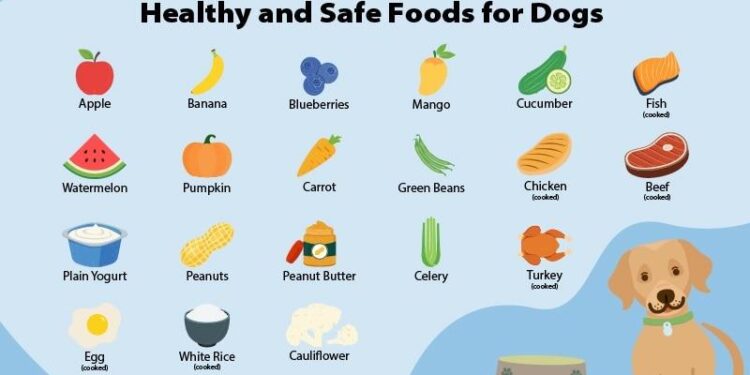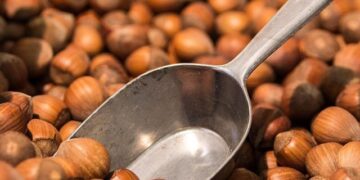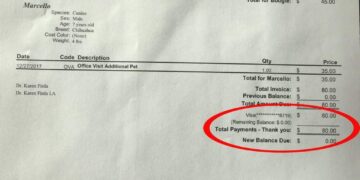Table of Contents
Introduction: The Daily Drama of the Untouched Bowl
The morning ritual had become a familiar, heart-sinking drama.
Clara knelt, placing a ceramic bowl on the floor with the reverence of a sacred offering.
Inside, a carefully measured portion of a premium, grain-free kibble—a brand whose packaging featured majestic wolves and promised an “ancestral diet.” Pip, her 12-pound Maltese mix, trotted over, gave the bowl a perfunctory sniff, and then looked up at Clara with an expression of profound indifference before wandering away.
Clara’s shoulders slumped.
This was the fourth brand in as many months, each more expensive than the last.
She had been seduced by the marketing, convinced that grains were the enemy and that feeding Pip this way was the closest she could get to what nature intended.
Yet, the results were the opposite of the vibrant health promised on the bag.
Pip was often lethargic, his once-gleaming white coat had a persistent dullness, and on days when he barely ate, he seemed weak, sometimes even trembling slightly.
The untouched bowl triggered a cascade of anxieties.
Was he sick? Was he just impossibly picky? Her online searches had led her down a rabbit hole of conflicting advice, with forums full of owners describing similar struggles.
To coax him to eat, she’d started a routine she knew was unsustainable: crumbling expensive freeze-dried toppers over the kibble, mixing in a spoonful of wet food, or, in moments of desperation, offering a few scraps of her own chicken from dinner.
Pip would often pick out the good bits and leave the kibble, a tiny, furry food critic who was inadvertently training his owner to serve him a banquet every meal.
Clara worried she was creating a monster of a picky eater while failing to provide the balanced nutrition he needed.
One evening, after Pip had once again refused his dinner, Clara watched him doze fitfully on his bed.
The gap between her intentions—to give him the absolute best—and the reality of his listless state felt vast and discouraging.
She was tired of guessing, of being swayed by clever marketing, of the gnawing worry that she was failing her small companion.
That night, she made a decision.
She would stop being a confused consumer and become an expert for Pip’s sake.
Her journey into the labyrinth of canine nutrition had begun, a quest to move from frustration and fear to knowledge and, finally, to the simple joy of a clean bowl.
Chapter 1: The Small Dog Paradox: More Than Just a Miniature Wolf
Clara’s first foray into research began with a fundamental question: What makes a small dog different from a large one, besides the obvious? The “miniature wolf” marketing on Pip’s food bags suggested they were simply scaled-down versions of their ancestors.
Her investigation quickly revealed this was a profound oversimplification.
Small dogs are not just little big dogs; they are unique physiological marvels with a completely different operating system.
Clara’s First Discovery: High-Octane Engines in a Tiny Chassis
The most critical distinction Clara uncovered was metabolism.
She learned that small dogs possess a significantly higher mass-specific basal metabolic rate (BMR) compared to their larger counterparts.
In essence, pound for pound, they burn calories at a much faster rate.
A study she found highlighted this dramatically, showing that a Papillon’s BMR is over 50% higher than that of a Great Dane.
The numbers were stark: a 10-pound dog might require around 40 calories per pound of body weight each day, whereas a 100-pound dog needs only about 22.5 calories per pound.
Pip’s little body was a high-performance engine, burning through fuel in just a few hours.
This metabolic reality has two direct consequences.
First, because of their rapid energy expenditure and tiny stomachs, the food they eat must be calorically and nutritionally dense.
They need to consume all the energy and nutrients required for the day in small, manageable portions before their stomach capacity is reached.
An all-breed food, which might be less dense, could fill up a small dog’s stomach before they’ve consumed enough calories to meet their needs.
This led Clara to a chilling realization about the intersection of picky eating and physiology.
The research repeatedly warned that if a small dog doesn’t eat enough calories frequently, it can develop hypoglycemia—a dangerous drop in blood sugar.
The symptoms were unnervingly familiar: weakness, lethargy, muscle tremors, and in severe cases, seizures.
Owners on forums described their picky dogs refusing meals, a behavior Clara knew all too well.
Her response, like theirs, was to offer high-value treats to get something into Pip’s system.
She now saw the insidious cycle this created.
Pip learned that refusing his kibble would result in a tastier reward, reinforcing the picky behavior.
But this very refusal put him at risk of the hypoglycemia she was trying to prevent.
Her well-intentioned coddling wasn’t just a behavioral issue; it was physiologically hazardous, perpetuating a cycle of poor nutrition and potential health crises.
Pip’s occasional weakness wasn’t laziness; it was a warning sign of a blood sugar crash.
The urgency of her quest intensified.
Clara’s Second Discovery: The Antioxidant Imperative
Digging deeper into the metabolic differences, Clara stumbled upon a concept that seemed counterintuitive at first but ultimately underscored the unique needs of small dogs.
A faster metabolism doesn’t just burn more calories; it also generates more metabolic byproducts, including damaging free radicals.
This process leads to greater oxidative stress, which can contribute to inflammation and cellular damage over time.
Logically, a body under higher oxidative stress would need more antioxidants to combat it.
This is why many small-breed formulas advertise “added antioxidants for immune support”.
But Clara found a scientific study that revealed a fascinating paradox: small dogs naturally have lower concentrations of several key antioxidants, such as glutathione and bilirubin, in their blood plasma compared to large dogs.
At first, this seemed like a dangerous vulnerability.
Why would a creature that needs more protection have less of it available in its system? But the study clarified that this is not due to a dietary deficiency.
Instead, the lower plasma levels likely reflect higher utilization of these antioxidants within the tissues, where they are actively working to neutralize the greater number of free radicals produced by their revved-up metabolism.
It is an adaptation, not a flaw.
This understanding transformed Clara’s view of the “added antioxidants” claim on a dog food bag.
It wasn’t just a vague marketing buzzword for general wellness.
For a small dog like Pip, a diet fortified with antioxidants like Vitamin E and Vitamin C is a targeted, critical intervention.
It provides the necessary reinforcements to help his body’s natural defense systems keep pace with the demands of his unique physiology.
Clara’s Third Discovery: The Mechanics of the Meal
Clara’s focus then shifted from the nutritional content of the food to its physical form.
She had always assumed that “small bites” kibble was a simple convenience, but her research revealed it was a cornerstone of small-breed health.
The anatomy of a small dog’s mouth—with its weaker jaw and tightly packed teeth—makes kibble size a paramount concern.
Properly sized kibble is not only easier to chew and swallow, reducing the risk of choking, but it also plays a vital role in dental health.
The abrasive action of chewing appropriately sized kibble helps scrape away plaque and prevent tartar buildup, a critical benefit for small breeds, which are notoriously prone to dental disease.
This final discovery connected all the dots for Clara, revealing an interdependent relationship between the food’s physical form, metabolism, and safety.
The logic was clear and inescapable:
- A small dog has a high metabolism and needs calorie-dense food.
- A small dog has a tiny stomach and cannot eat a large volume of food at one time.
- Therefore, to get enough calories, a small dog must be able to comfortably and efficiently chew and swallow every piece of its small, energy-rich meal.
- If the kibble is too large or difficult to chew, the dog may struggle, give up before it has eaten enough, and fail to meet its fundamental energy requirements. This failure to eat properly directly increases the risk of hypoglycemia.
Clara vividly recalled watching Pip push a “regular” sized kibble around his bowl once, a sample she’d received.
She had dismissed it as simple pickiness.
Now, she understood the truth.
He wasn’t being difficult; he was likely physically unable to manage the food, a mechanical barrier that prevented him from getting the very energy his body was screaming for.
The size of the kibble was not a minor detail; it was the gateway to his entire nutritional well-being.
Chapter 2: The Great Grain Inquisition: Separating Fact from Fear
Armed with a new understanding of Pip’s unique physiology, Clara was ready to confront the dogma that had dominated her purchasing decisions for years: the belief that grains are inherently bad for dogs.
She thought back to the persuasive marketing, the images of wolves, and the pervasive “ancestral diet” narrative that had pushed her, and millions of other owners, toward grain-free formulas.
It was time to investigate the foundation of this trend and the controversy that surrounded it.
Deconstructing the DCM Scare
Clara’s research led her straight to the heart of the grain-free debate: the U.S. Food and Drug Administration’s (FDA) investigation into a potential link between certain diets and a serious heart condition called non-hereditary dilated cardiomyopathy (DCM).
She learned that the investigation began in July 2018 after veterinary cardiologists noticed a spike in DCM cases in breeds not typically predisposed to the disease.
The common thread appeared to be their diet.
The FDA’s initial reports focused on dogs eating foods labeled “grain-free” that contained a high proportion of peas, lentils, other legume seeds (pulses), and/or potatoes as main ingredients.
In fact, over 90% of the diets reported in the DCM cases were labeled “grain-free,” and 93% contained peas and/or lentils.
This is where Clara realized she had fallen for the simplified, sensational headline.
The public narrative quickly became “grain-free food causes heart disease.” However, as she dug into the FDA reports and veterinary analyses, a more complex picture emerged.
The concern was not about the absence of grain itself, but rather the high proportion of novel ingredients being used to replace those grains.
The leading theory was that these high levels of legumes might contain anti-nutritive factors that interfere with the absorption or metabolism of taurine, an amino acid essential for heart muscle function, or have other unknown negative effects.
Furthermore, the popular acronym used to describe these diets—”BEG” (Boutique, Exotic, Grain-Free)—was itself misleading.
An analysis of the reported cases revealed that the most common protein source was not some exotic meat like kangaroo, but chicken.
The issue pointed toward a potential problem with formulation science—specifically, the long-term effects of using massive quantities of legumes as a primary protein and carbohydrate source—rather than a simple grain versus no-grain dichotomy.
Clara’s fear of an ingredient (grain) began to transform into a more sophisticated concern for choosing foods from companies with a proven track record of nutritional research and formulation.
Her research into the investigation’s conclusion was even more eye-opening.
After years of study, the FDA announced in December 2022 that it had not established a definitive causal link and would be ending its regular public updates, calling DCM a “complex scientific issue” that may involve multiple factors.
This crucial update was released quietly just before the Christmas holiday, effectively burying the news and leaving many pet owners like Clara stuck with outdated fears.
The entire episode, including allegations of influence from established pet food companies and biased case reporting, left her feeling a sense of “misinformation whiplash” and solidified her resolve to rely on scientific evidence, not marketing trends.
The Case for Wholesome Grains
Freed from the fear that had dictated her choices, Clara now investigated the role of grains with an open mind.
She quickly learned that, contrary to the marketing, true grain allergies in dogs are quite rare, affecting only a small fraction of the canine population.
The most common food allergens are overwhelmingly proteins like beef, dairy, and chicken—not grains.
She discovered that dogs have evolved to digest starches effectively, thanks to the enzyme amylase.
High-quality whole grains are far from being “fillers.” They are a valuable source of nutrients, including:
- Carbohydrates: A readily available source of glucose to provide energy for the body’s cells and organs, especially the brain.
- Fiber: Both soluble and insoluble fiber are crucial for promoting good gut health, regulating digestion, and feeding the beneficial microflora in the gut.
- Essential Nutrients: Wholesome grains provide important B vitamins, minerals, and antioxidants.
The key, she learned, was to distinguish between high-quality grains and low-quality additives.
Ingredients like whole brown rice, barley, oats, and quinoa are nutritious components of a balanced diet.
In contrast, cheap fillers like corn, soy, and non-specific “grain fragments” or “mill run” offer little nutritional value and are often used to bulk up lower-quality foods.
The goal was not to avoid all grains, but to choose foods that used the right grains for the right reasons.
Chapter 3: Becoming a Label Detective: How to Read a Bag Like a Nutritionist
Clara realized that to make the best choice for Pip, she had to learn the language of pet food.
The colorful bags with their appealing pictures and marketing claims were designed to sell, but the real story was told in the fine print on the back.
She set out to become a label detective, determined to crack the code.
Cracking the AAFCO Code
Her first major breakthrough was understanding the role of the Association of American Feed Control Officials (AAFCO).
She learned that AAFCO is not a government regulatory body that tests, approves, or certifies pet food.
Instead, it is a voluntary association of feed control officials that establishes nutritional standards and labeling guidelines that are then adopted into law by most states.
The FDA, in turn, relies on these AAFCO standards to regulate the industry.
The most important piece of information AAFCO provides to consumers is the Nutritional Adequacy Statement.
This small block of text, usually on the back or side of the bag, is the manufacturer’s guarantee that the food is “complete and balanced” for a specific life stage.
For an adult dog like Pip, Clara knew to look for the “Adult Maintenance” life stage designation.
Any product without this statement, often labeled “for intermittent or supplemental feeding only,” is not a complete diet and should only be used as a treat or topper.
As she delved deeper, she uncovered a crucial distinction within these statements that separated good foods from the best.
AAFCO allows two methods for a company to substantiate its “complete and balanced” claim:
- Formulation Method: The label will state, “(Product Name) is formulated to meet the nutritional levels established by the AAFCO Dog Food Nutrient Profiles…”. This means the food was created based on a recipe that, on paper, meets the minimum nutrient requirements. It’s a laboratory analysis, a nutrient calculation. This is the most common method and represents the floor for nutritional adequacy.
- Feeding Trial Method: The label will state, “Animal feeding tests using AAFCO procedures substantiate that (Product Name) provides complete and balanced nutrition…”. This is a much higher standard. It means the food was actually fed to a group of dogs for an extended period (26 weeks for adult maintenance) under veterinary supervision to prove that it performs as expected in a living animal. This method is the gold standard, demonstrating a company’s commitment to verifying their product’s efficacy beyond a simple formula.
This knowledge gave Clara a powerful new tool.
From now on, she would prioritize foods that had undergone the more rigorous feeding trials, seeing it as a tangible sign of a manufacturer’s confidence and investment in their product’s quality.
The Ingredient List Unveiled
Next, Clara tackled the ingredient list.
She learned the fundamental rule: ingredients are listed in descending order by their pre-cooking weight.
This meant the first few ingredients make up the bulk of the food.
She developed a new set of criteria based on this rule:
- Look for Named Proteins First: The first ingredient should be a high-quality, specific animal protein, such as “deboned chicken,” “lamb,” or “salmon meal.” She learned to avoid vague, non-specific terms like “meat,” “poultry,” or “animal by-products,” which could be sourced from lower-quality or inconsistent materials. While some regulated byproducts like organ meats can be nutritious, the lack of specificity was a red flag.
- Beware of Ingredient Splitting: She discovered a common trick used to manipulate the ingredient list. A manufacturer might use several forms of a single, less desirable ingredient, like corn, and list them separately—for example, “ground corn,” “corn gluten meal,” and “corn bran”. This splits the total weight of the corn, pushing each entry further down the list and making a meat ingredient appear more prominent than it truly is. She now knew to be skeptical if the first five ingredients included multiple variations of the same grain.
Table 1: How to Be a Nutrition Detective: Calculating Dry Matter Basis
Clara’s final piece of technical training was learning how to compare different types of food accurately.
She understood that simply looking at the “Guaranteed Analysis” on a bag of dry kibble versus a can of wet food was deeply misleading.
The enormous difference in moisture content—typically 10-12% in dry food versus 75-82% in wet food—dramatically skews the percentages of protein, fat, and fiber.
To make a true, apples-to-apples comparison, she had to convert the “as-fed” values to a “dry matter basis” (DMB), which removes the water from the equation.
This was the single most empowering skill she acquired, allowing her to see the true nutritional density of any food.
| Feature | Product A (Dry Kibble) | Product B (Canned Food) | The Calculation Method | Product A (DMB) | Product B (DMB) |
| Guaranteed Crude Protein (%) | 37% | 11% | |||
| Guaranteed Moisture (%) | 12% | 78% | |||
| Step 1: Find Dry Matter (%) | 88% | 22% | 100% – Moisture % | ||
| Step 2: Calculate DMB Protein (%) | 42% | 50% | (Crude Protein % ÷ Dry Matter %) x 100 | 42.0% | 50.0% |
| Data derived from FDA examples. This calculation reveals that the canned food, which appears to have far less protein, is actually significantly more protein-dense than the dry food once moisture is accounted for. |
Chapter 4: The Epiphany: A Curated Menu for a Picky Prince
Clara’s journey through the dense forests of nutritional science and marketing jargon had led her to a clearing.
She was no longer a passive consumer but an informed advocate for Pip.
She synthesized all her research into a clear, actionable checklist that would guide her final selection.
Clara’s Checklist for the Perfect Small-Breed Food
- Small-Breed Specific Formula: The kibble must be small and easy to chew, designed for small jaws and teeth. This was a non-negotiable starting point.
- Calorie and Nutrient Dense: The formula must be rich in calories and nutrients to fuel a high metabolism from a small stomach.
- High-Quality, Named Protein First: The ingredient list must begin with a specified meat or fish source, like “deboned chicken” or “salmon meal.” Vague terms were an automatic disqualification. She aimed for a crude protein level of at least 25%.
- Wholesome Grains, No Fillers: The recipe should include beneficial whole grains like brown rice, oats, or barley. She would actively avoid foods that relied on corn, wheat, or soy as primary ingredients.
- Targeted Supplements: The food should be fortified with key nutrients that support small-dog physiology: omega-3 and omega-6 fatty acids for skin and coat; antioxidants like Vitamins E and C to combat oxidative stress; and ideally, L-carnitine to aid fat metabolism and glucosamine and chondroitin for long-term joint health.
- AAFCO Statement: The package must carry a “complete and balanced for adult maintenance” statement, with a strong preference given to brands that substantiate this claim with AAFCO-protocol feeding trials.
The Shortlist: Top-Tier Grain-Inclusive Foods for Small Dogs
Armed with her checklist, Clara began her final evaluation, cross-referencing her criteria with top-rated brands recommended by veterinary nutritionists and trusted consumer guides.1
She narrowed her focus to three exemplary products that represented different philosophies while all meeting her high standards.
- Review 1: Merrick Classic Healthy Grains Small Breed Recipe
- Analysis: This food immediately checked several boxes. The first ingredient is deboned chicken, followed by chicken meal, ensuring a strong protein foundation. The grain blend featured high-quality whole grains: brown rice, barley, and oatmeal, with no corn, wheat, or soy. The formula is fortified with high levels of glucosamine and chondroitin for joint support and ample omega-3 and omega-6 fatty acids for skin and coat health. With a guaranteed analysis of 27% crude protein and 16% crude fat, it offered a robust and balanced profile perfect for an adult small dog. It was a quintessential example of a well-crafted, grain-inclusive diet.
- Review 2: Orijen Amazing Grains Small Breed
- Analysis: This formula stood out for its exceptional protein content and ingredient sourcing. The first five ingredients are fresh or raw animal proteins: turkey, chicken, turkey giblets, whole herring, and cod. This “WholePrey” approach, including nutrient-rich organs, results in a very high crude protein level of 38%. The kibble is explicitly designed to be smaller for little mouths. The grain blend is also impressive, using oat groats, millet, quinoa, and chia. Critically, it contains a high level of Vitamin E (750 IU/kg), directly addressing Clara’s concern about antioxidant support. The AAFCO statement confirms it is formulated for adult maintenance, making it a premium, protein-forward choice for a vibrant small dog.
- Review 3: Nutro Ultra Small Breed Adult
- Analysis: Clara was intrigued by this food’s “trio of proteins” from chicken, lamb, and salmon, which provides a diverse amino acid profile. Real chicken is the #1 ingredient, and the formula uses a blend of whole grains including sorghum, oatmeal, and brown rice. The company makes a point of stating the food contains no chicken by-product meal, corn, wheat, or soy, aligning with Clara’s criteria. It also incorporates a blend of 15 “superfoods” like coconut, chia, and blueberries to provide natural sources of antioxidants. The guaranteed analysis shows 26% crude protein and 17% crude fat, offering a solid, balanced nutritional platform for whole-body health.
Table 2: Head-to-Head: A Detailed Comparison of Leading Small-Breed Formulas
To make her final decision, Clara created a comparison table.
Using her newfound skill, she calculated the Dry Matter Basis (DMB) for protein and fat to get a true sense of each food’s nutritional value, side-by-side.
| Feature | Merrick Classic Healthy Grains | Orijen Amazing Grains | Nutro Ultra Small Breed |
| First 5 Ingredients | Deboned Chicken, Chicken Meal, Brown Rice, Barley, Oat Meal | Turkey, Chicken, Turkey Giblets, Whole Herring, Cod | Chicken, Chicken Meal, Whole Grain Sorghum, Whole Grain Oatmeal, Whole Grain Brown Rice |
| Primary Grain Sources | Brown Rice, Barley, Oatmeal, Quinoa | Oat Groats, Millet, Whole Oats, Quinoa Seed, Chia | Sorghum, Oatmeal, Brown Rice, Barley |
| Crude Protein (As Fed) | 27% | 38% | 26% |
| Crude Protein (DMB) | 30.3% | 43.2% | 28.9% |
| Crude Fat (As Fed) | 16% | 18% | 17% |
| Crude Fat (DMB) | 18.0% | 20.5% | 18.9% |
| Key Supplements | Glucosamine (400 mg/kg), Chondroitin (400 mg/kg), Omega-3 (0.3%), Omega-6 (3.0%) | Glucosamine (800 mg/kg), Vitamin E (750 IU/kg), Omega-3 (1.1%), Omega-6 (3.0%) | Omega-3 (0.65%), Omega-6 (3.30%), Essential Antioxidants |
| AAFCO Statement | Formulated to meet AAFCO profiles for adult maintenance. (Feeding trials not specified) | Formulated to meet AAFCO profiles for adult maintenance. | Formulated to meet AAFCO profiles for adult maintenance. (Feeding trials not specified) |
| Noteworthy Features | Focus on wholesome grains and joint support. | Extremely high in animal protein; “WholePrey” ingredients. | Trio of protein sources; blend of 15 “superfoods.” |
Dry Matter Basis (DMB) calculated using 11% moisture for Merrick and Nutro, and 12% for Orijen, as per their guaranteed analyses.
Conclusion: The Simple Joy of a Clean Bowl and a Thriving Companion
The table laid it all O.T. Each food was an excellent choice, a testament to quality manufacturing and sound nutritional science.
Clara decided to start with the Merrick Classic Healthy Grains, appreciating its strong balance of high-quality protein, wholesome grains, and dedicated joint support—a great all-around choice for Pip.
She followed the transition guidelines meticulously, starting with a mixture of 25% new food and 75% of the old grain-free kibble, gradually shifting the ratio over the course of a week to avoid any digestive upset.
The first time she put down a bowl of just the new Merrick food, she held her breath.
Pip trotted over, sniffed, and then, to her utter delight, he began to eat.
The small, bite-sized kibble was clearly easy for him to manage, and he crunched away with an enthusiasm she hadn’t seen in months.
The change in the following weeks was nothing short of remarkable.
The lethargy vanished, replaced by a playful energy that had been missing for too long.
His coat regained its brilliant shine, and his eyes were bright and alert.
The daily drama of the untouched bowl was gone, replaced by the quiet, satisfying sound of a happy, healthy dog enjoying his meal.
There were no more moments of weakness, no more desperate attempts at coaxing.
There was just Pip, thriving.1
Clara’s journey had come to an end, but her new role as an informed pet parent had just begun.
She was no longer a passive recipient of marketing messages but an active, empowered advocate for her dog’s health.
Her story serves as a roadmap for any owner lost in the confusing aisles of the pet store.
The path to providing the best for our small but mighty companions is not paved with fear or trendy labels, but with knowledge, critical thinking, and a commitment to understanding their unique needs.
The reward is immeasurable: the simple, profound joy of a clean bowl and a thriving best friend.
Works cited
- FDA Investigation into Potential Link between Certain Diets and …, accessed August 13, 2025, https://www.fda.gov/animal-veterinary/outbreaks-and-advisories/fda-investigation-potential-link-between-certain-diets-and-canine-dilated-cardiomyopathy






